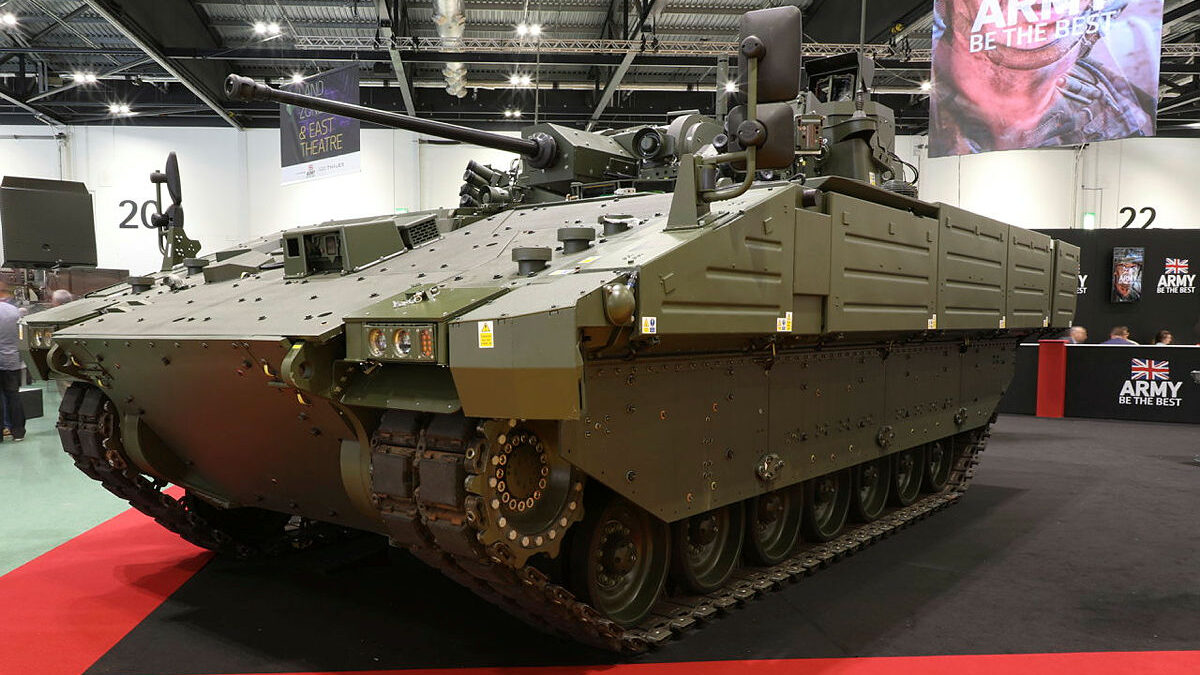
The troubled Ajax Armored Fighting Vehicle program has been best by technical issues linked to excessive vibrations causing some service personnel suffering hearing loss (UK MoD)
BELFAST — The United Kingdom’s Ministry of Defence (MoD) has belatedly approved new Initial Operating Capability (IOC) and Final Operating Capability (FOC) dates for the Ajax Armored Fighting Vehicle (AFV) that will see it enter service between July and December 2025 — eight years later than originally planned.
The decision brings to a close months of uncertainty in which officials refused to commit to any timeframe for the troubled British Army platform to be fielded after the vehicle had to undergo a second round of tests due to excessive vibrations that left some service personnel reportedly suffering from hearing loss.
Alex Chalk, UK minister for defense procurement announced the IOC reset today in an update to parliament and also confirmed that FOC has been scheduled to take place between October 2028 and September 2029.
“Full Operating Capability will be met when the Army has trained and converted forces to the Ajax platform to deliver Armoured Cavalry capability to the Deep Reconnaissance Strike Brigade and its two Armoured Brigade Combat Teams,” he noted.
“The ability to deliver against this new schedule has been extensively scrutinised and assured within the department and externally. A recent review by the Infrastructure and Projects Authority concluded the programme’s successful delivery is feasible, re-grading the Ajax programme from Red to Amber.”
RELATED: UK faces tough choices to fix troubled Ajax vehicle
As a result of the technical problems, the MoD had been withholding payments from manufacturer General Dynamics UK (GDLS-UK) since December 2020, but a first new payment of £480 million ($588 million) will be made “this month,” according to Chalk. GDLS-UK referred Breaking Defense’s questions to the MoD.
Figures from the UK National Audit Office (NAO), a national financial watchdog, show that the MoD and General Dynamics agreed to a £5.5 billion ($6.7 billion) “firm-priced contract” for the design, delivery and in-service support of 589 vehicles.
The NAO also said that as of December 2021, the MoD had paid GDLS-UK £3.2 billion ($3.9 billion), with the manufacturer, at that time, having built 324 hulls, and assembled and completed factory acceptance testing of 143 vehicles.
Based on commencing tests again in January 2023, more commonly referred to by the MoD as “Reliability Growth Trials,” Ajax, Apollo, Atlas and Ares variants of the vehicle have “driven over 2,260 kilometres through different terrains, completing a variety of representative battlefield tasks such as operating across a range of speeds and terrains, firing weapon systems, using the vehicles systems and communications,” according to Chalk.
The minister also said that “no fundamental design issues” have been discovered since the restarted tests began.
Overall, the British Army will receive up to six Ajax variants, with the vehicle set to become the service’s first fully digitized platform. It will primarily serve in a Intelligence, Surveillance, Target Acquisition and Reconnaissance (ISTAR) role, integrated with a 40mm-stabilized cannon and a primary sight fitted with “imaging technology capability” allowing it to detect and engage targets at “far greater ranges” than legacy platforms, according to GDLS-UK company literature.
The vehicle is operated by a three person crew and has a top speed of 44 miles per hour.
Sullivan: Defense industry ‘still underestimating’ global need for munitions
National Security Advisor Jake Sullivan said that there are “no plans” for another Ukraine supplemental at this point.


























